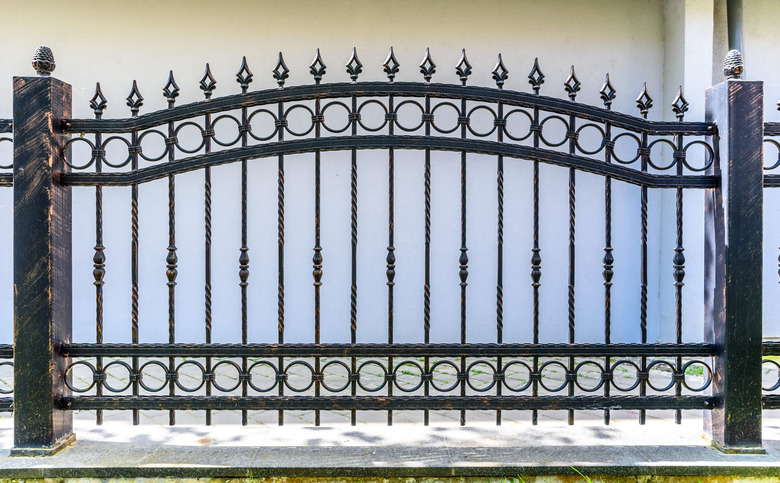When Building A Fence, Do Posts Go On My Side Or The Neighbor's Side?
Fence etiquette, also known as being a good neighbor, will go a long way towards creating or maintaining a friendly relationship with those who live next door. Planning your new fence in a neighborly manner requires several steps before you begin to dig. Most importantly, fence etiquette and the law require that your fence and its posts be located on your property, not your neighbor's.
Learn the Laws
The first step in building a new fence is to check with your town and your Homeowner's Association (HOA), if you have one. Local zoning regulations may include specific restrictions on the height of your fence and how far it must be setback from the road. Typically, a town will limit the side and back of your fence to 6 feet and the front of your fence to 4 feet. These restrictions may change if you live on the corner of a street where a tall fence could limit a driver's visibility. Your HOA may have additional rules, such as the height, styles allowed and even a maintenance schedule, so it's also important to check with them. Not learning the rules may result in disputes with your town or HOA. It could also result in having your fence removed.
Locate Your Property Lines
Another risk to your fence's permanence is the exact location of your structure. You can avoid installing on your neighbor's property by reviewing your property lines. If you don't have a survey in your possession, your town may be able to provide you with a copy, or you can order a new one from a land surveyor. Depending on where you live, the costs to purchase a survey from a professional will be between $500 and $1,000. Fences are usually installed a foot inside your property lines, just to be safe. Once your property line is identified, learn and mark the location of any buried pipes and wires so they aren't damaged during fence installation.
Determine the “Good Side”
Some privacy fences have one side that is finished, known as the "good side," where the wood appears smoother and more refined, while the other side will show both the rails and posts. If the style you've selected has a "good side," then that should be installed to face the neighbors and street. This is not only standard practice but common courtesy. Additionally, your property will appear nicer from the road if the "good side" is facing outward.
If you prefer to look at the "good side" yourself, then select a fence that looks the same on both sides. Another alternative is to install a double-sided privacy fence. Besides the look, the benefit of this type of fence is its added strength as it is created by using "sandwich construction."
Talk to Your Neighbors
Once you've determined the location, style of your fence and checked all local and HOA rules, reach out to your neighbors to notify them of your plans. Even though the fence will be on your property, they will still see it daily so proper etiquette is important. This common courtesy may prevent future legal trouble from a neighbor who chooses to dispute your new fence. As a bonus, speaking to your neighbor may actually save you money. Since it will divide your yards and provide privacy for each of you, they may want to work with you on the project and split the costs.
